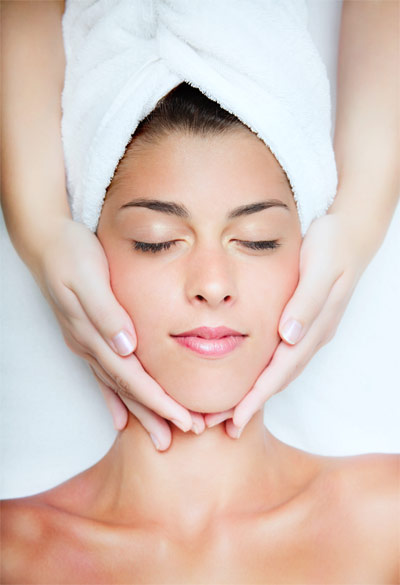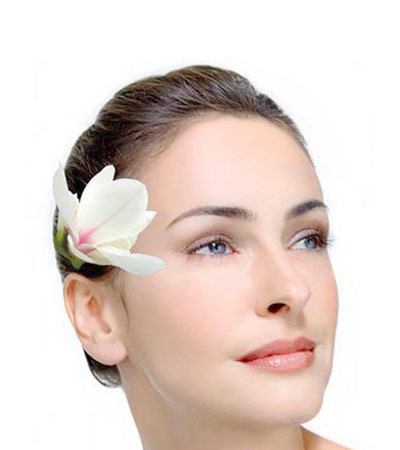|
|
|
 , ,
Font size |
Top 10 Beauty Treatments done by Celebrities Before the Oscars.

 Liquid Nitrogen Treatment: Bacteria-Busting
Facials:
Liquid Nitrogen Treatment: Bacteria-Busting
Facials:
Facials with extractions can trigger more blemishes than they treat: All
that poking releases a flood of germs onto the skin's surface. So aestheticians
have invented smart solutions to the problem. "We apply gauze dipped in
freezing-cold liquid nitrogen to kill bacteria and soothe the skin," says Rand
Rusher, a Beverly Hills registered nurse and skin specialist and star of the
reality show Pretty Hurts. (Only aestheticians in doctors' offices are legally
allowed to use liquid nitrogen this way.) Hollywood facialist Shani Darden
staves off breakouts by following extractions with acid�which typically means
doing two peels in one treatment. Such is the case with her client Jessica Alba:
"After cleansing, I do a glycolic and lactic acid peel, extractions, and then
apply lactic acid, just as a flash peel, neutralizing it after 30 seconds,"
explains Darden. "It leaves Jess's skin clear and smooth with a really nice
glow."
Jamie's team applies gauze dipped in liquid nitrogen to kill bacterial and sooth
the skin.
Liquid Nitrogen Treatment
Liquid nitrogen is extremely cold. It will freeze any living tissue it comes
into contact with. Applying small amounts of liquid nitrogen to various skin
problems is now a standard treatment.
What can it treat?
Warts, verrucas, skin tags, small fleshy growths and similar small 'lumps and
bumps' on the skin are ideal for liquid nitrogen treatment.
Is it painful?
Applications usually last about 10-30 seconds. Try holding a cube of ice against
your skin for 10-30 seconds. It is uncomfortable but usually not too painful.
Liquid nitrogen applied
to skin is similar but colder and most people find the discomfort quite
bearable.
What can I expect?
After a treatment the lump, wart or whatever is being treated will gradually
discolour and fall off. The surrounding skin will sometimes become red and
swollen and be sore for a day or so. It is similar to a mild burn. Occasionally
a blister (sometimes a 'blood blister') forms. If this happens, it is best to
pop it with a clean pin and apply a plaster. New skin quickly forms and any scab
or blister will soon disappear. The cosmetic result is usually good.
Does it always work?
 Usually
it does. However, sometimes thicker warts or verrucas need two or more sessions
of liquid nitrogen treatment over a period of a few weeks to get to the root.
Compared with other treatments most people find liquid nitrogen the most
effective and the least time-consuming way of removing these skin blemishes. Usually
it does. However, sometimes thicker warts or verrucas need two or more sessions
of liquid nitrogen treatment over a period of a few weeks to get to the root.
Compared with other treatments most people find liquid nitrogen the most
effective and the least time-consuming way of removing these skin blemishes.
Liquid nitrogen is a simple, effective treatment for removing warts and moles
commonly used by dermatologists. If you've already had warts treated in this way
and feel comfortable with the procedure, you may consider doing it yourself. If
you can damage and kill these blood vessels by freezing them, the wart will die.
Eventually it will fall off.
Liquid nitrogen is cold enough to bring about this localized freezing. We want
to restrict the tissue damage to the smallest possible area. The wart will be
raised slightly, redden, and you may feel a slight burning sensation. If the
blister breaks, tissue underneath is likely to be re-infected and cause the wart
to grow back. After some number of days, you will notice a reddish tint inside.
Slowly the fluid of the blister will be re-absorbed. The blister will change to
a darker color. As it dries out the skin will seem a bit thicker. If you do, the
wart is more likely to grow back. Even if you always pick your scabs and squeeze
your pimples, you can and need to learn to wait in order to be free of your
warts. When the dead skin and dried up wart core sloughs off on its own, you
will have closed, healthy skin below. An advantage of this technique is that
when done properly, the outer layer of skin is never broken, greatly reducing
the infection risk compared to other techniques.
Cryotherapy using liquid nitrogen (temperature �196C) involves the use of a
cryospray, cryoprobe or a cotton-tipped applicator. The nitrogen is applied to
the skin lesion for a few seconds, depending on the desired diameter and depth
of freeze. The treatment is repeated in some cases, once thawing has completed.
This is known as a �double freeze-thaw� and is usually reserved for skin cancers
or resistant viral wart.
Back
Dated 27 February 2013

|
|
|
|
|
|









